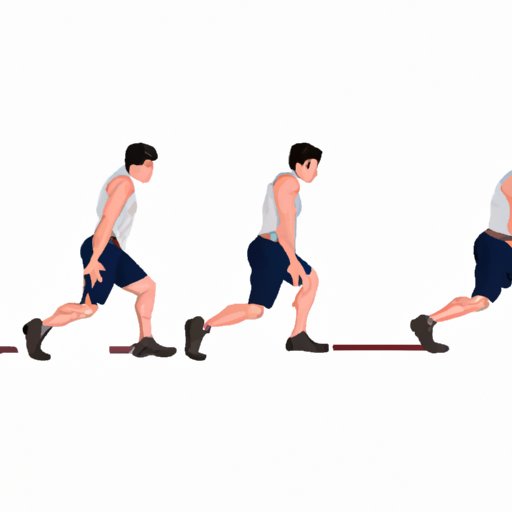
The Ultimate Guide to Getting Strong: Tips for Building Muscle and Boosting Health
Have you been hitting the gym but not seeing the results you were hoping for? Or are you simply looking to improve your overall health and build muscle? Getting strong is an important aspect of maintaining a healthy lifestyle. Not only will you feel stronger and more capable in your everyday life, but you’ll also enjoy numerous benefits, such as improved bone density, increased metabolism, and reduced risk for chronic disease. In this guide, we’ll explore a variety of tips and techniques for building strength and achieving your fitness goals.
The Importance of Strength Training
Strength training is an essential component of any effective workout routine. By lifting weights or utilizing resistance training, you can build muscle, increase bone density, and improve overall health. Resistance training is especially effective for building muscle, as it requires the muscles to work against an opposing force. This can be accomplished through the use of barbells, dumbbells, kettlebells, resistance bands, or even bodyweight exercises. Incorporating strength training into your workouts can also help boost metabolism, as muscle burns more calories than fat. Additionally, strength training has been linked to reduced risk of chronic disease, such as diabetes and heart disease.
Bodyweight Exercises for Building Strength
Bodyweight exercises are a great option for building strength, especially for those who don’t have access to equipment. Examples of bodyweight exercises include push-ups, squats, lunges, and planks. These exercises work multiple muscle groups simultaneously, making them an effective and efficient choice. Bodyweight exercises can also be modified to suit any fitness level, from beginner to advanced. For example, a beginner could start with an assisted push-up using a bench or wall, while an advanced exerciser could perform a one-legged squat.
Form and Technique
Form and technique are key to maximizing results and preventing injury when performing exercises. Correct form ensures that the right muscles are being targeted and that the exercises are being performed safely. For example, when performing a squat, it’s important to keep the weight on your heels, engage your core, and keep your knees in line with your toes. When lifting weights, it’s important to start with a weight that is challenging but manageable, and to gradually increase weight as strength improves. Some common exercises and their proper form include: deadlifts (keeping the back straight and lifting with the legs), bench press (gripping the bar with a wide grip and bringing it down to the chest), and rows (pulling the weight towards the chest while keeping the back straight).
High-Intensity Interval Training (HIIT)
High-intensity interval training, or HIIT, is a type of cardiovascular and strength training that alternates between short bursts of high-intensity work and periods of rest or low-intensity work. This type of training has been shown to be effective for building strength as well as improving cardiovascular health. Examples of HIIT workouts include alternating between sprints and rest periods on a stationary bike, or performing burpees, squat jumps, and push-ups in rapid succession.
Functional Movements
Functional movements are exercises that mimic real-life movements and help build practical strength for everyday activities. Examples of functional movements include deadlifts, squats, and lunges, as well as pulling and pushing movements. These exercises can help improve posture, balance, and overall functionality. To perform a deadlift, for example, stand with feet hip-width apart, grip the weight with an overhand grip, keeping the bar close to the body, and lift it while keeping your back straight and engaging your core.
Nutrition for Building Strength
Proper nutrition is essential for building strength. Consuming enough protein is especially important, as protein helps repair and rebuild muscle tissue after exercise. Good sources of protein include lean meats, fish, chicken, eggs, and legumes. It’s also important to stay hydrated by drinking plenty of water throughout the day. Additionally, incorporating nutrient-dense foods into your diet, such as fruits, vegetables, and whole grains, can help provide energy and support overall health.
Setting and Tracking Goals
Setting goals is important for staying motivated and tracking progress. When setting goals, it’s important to be specific, measurable, and attainable. For example, a specific and measurable goal might be to increase your bench press by 10 pounds over the course of a month. To track progress, keep a log of your workouts and note changes in weight or the amount of weight lifted. Celebrate small achievements along the way to help stay motivated.
Conclusion
Getting strong is an essential part of maintaining a healthy lifestyle and improving overall health and wellness. By incorporating strength training, bodyweight exercises, HIIT, and functional movements into your workouts, and by prioritizing proper form, nutrition, and goal-setting, you can achieve your fitness goals and enjoy a stronger, healthier, and more capable body.




